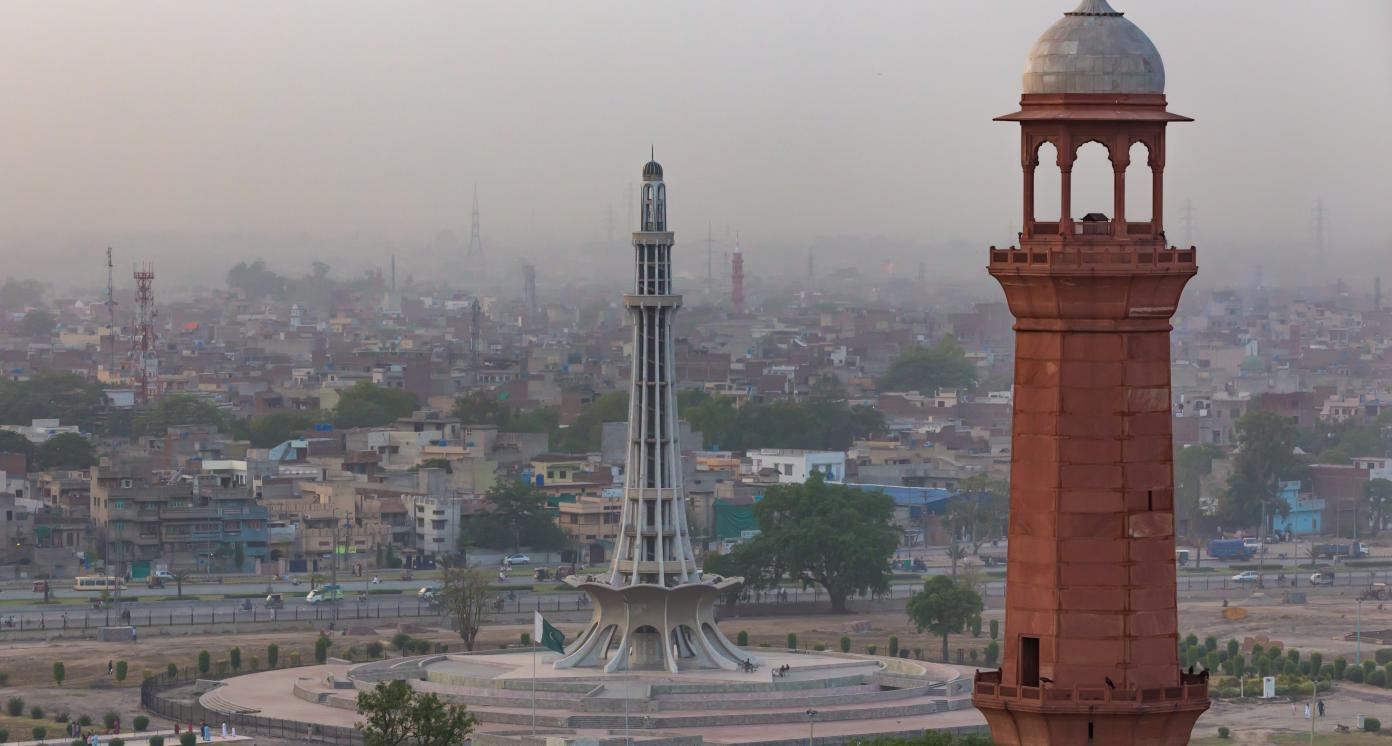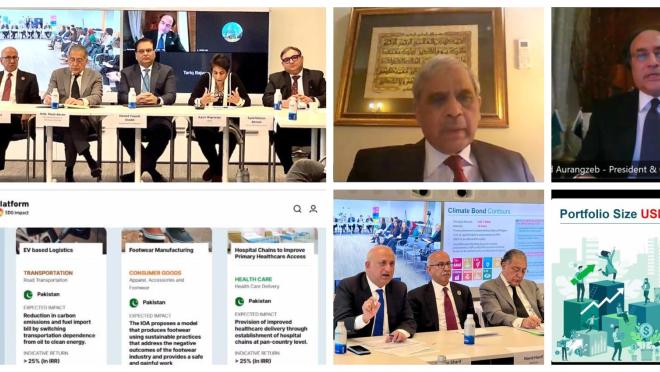Pakistan, the world’s fifth most populous country in 2021, is a lower-middle-income country aspiring to be among the 10 largest economies in the world by 2047. A growing young population underscores the potential for rapid economic growth to reap a rich demographic dividend and leverage the geo-strategic location of Pakistan as a future regional hub for trade and economic activity. Pakistan has demonstrated an impressive policy, institutional and financial commitment to achieving the Sustainable Development Goals, embracing the 2030 Agenda for Sustainable Development, and Leaving No One Behind by adopting the UNDP-supported Goals frameworks as part of its national development planning, ‘Vision 2025’.
Pakistan made significant progress towards reducing poverty between 2001 and 2018 when the expansion of off-farm economic opportunities and increased inflow of remittances allowed over 47 million Pakistanis to rise out of poverty. In 2022, Pakistan was hit by severe floods that led to an economic loss amounting to 2.2 per cent of its GDP. Working with the United Nations system, the World Bank Group, the Asian Development Bank, and the European Union, a Post-Disaster Needs Assessment (PDNA) was prepared, which estimates flood damages to exceed USD14.9 billion, economic losses over USD15.2 billion and reconstruction needs over USD16.3 billion. The core priorities of this Resilient Recovery, Rehabilitation, and Reconstruction Framework (4RF) are the revival of livelihoods and agriculture, the rebuilding of private housing, and the reconstruction of public infrastructure, including roads, bridges, schools, and hospitals. Climate action and disaster risk reduction go hand-in-hand in this new development paradigm. More risk reduction and resilience-building efforts will be required to be integrated into response and recovery strategies of humanitarian organizations, development partners and the Government of Pakistan to adapt to the impact of climate change and protect the most vulnerable. Besides the addition of this lens to the economic revival of Pakistan, such an intent will need to be matched with improved socio-economic conditions, as human capital outcomes have remained below expectations, with high levels of stunting at 38 per cent and learning poverty at 75 per cent. There is also a need for productivity-enhancing investment and exports that can complement the current consumption-driven growth model to combat economic imbalances and macroeconomic crises.
To address the economic and social challenges facing Pakistan today, UNDP is strategically positioned to support structural transformation within the country. UNDP’s Country Program Document for Pakistan (2023- 2027) will leverage its trusted relationships with national, provincial and local entities and development partners to implement a sharpened development agenda aligned with national development priorities by scaling up the gains achieved through a change in three directions: (a) structural transformation for green, inclusive and digital transitions; (b) leaving no one behind by centring human agency and development; and (c) building resilience to respond to systemic vulnerability and risk. These efforts are complemented by the World Bank’s suggested areas to spur development such as transforming the energy sector by supporting reforms and investments in the power sector; supporting private sector development through a mix of budget support, investments and analytical work to improve the investment climate and overall competitiveness; reaching out to the underserved, neglected and low-income households through investments to support financial inclusion for MSMEs, women and youth, fragile provinces and regions; social protection, resilience and adaptation to the impact of climate change; and accelerating improvements in service delivery at the federal and provincial levels, especially in social sectors such as education and healthcare. These initiatives should consider cross-cutting themes such as women’s economic empowerment, climate change and resilience and regional economic connectivity.
With these ambitions in sight, Pakistan has been able to draw FDI into the country with a positive outlook and opportunity for investors. To aid this agenda, UNDP in Pakistan, in partnership with the Ministry of Foreign Affairs and other stakeholders using a whole-of-government approach launched the Pakistan SDG Investor Map to showcase investment opportunities in areas with policy, development and investment momentum that can materially provide commercial and impact returns.
Sources:
- Responding to Pakistan Floods; Brookings Institution (2023)
- World Bank country overview for Pakistan (April 2023)
- UNDP Country Program Document for Pakistan (2023-2027)
Please access this link to the narrative report on the SDG Investor Map: Pakistan's SDG Investor Map Report
15



Health Care, Food and Beverage, Consumer Goods
0.544
How is this information gathered?
SDG Investor Maps employ an 8-step methodology, combining data research and stakeholder consultations to identify Investment Opportunity Areas (IOAs) and potential business models with significant financial and impact potential.
Disclaimer
UNDP, the Private Finance for the SDGs, and their affiliates (collectively “UNDP”) do not seek or solicit investment for programmes, projects, or opportunities described on this site (collectively “Programmes”) or any other Programmes, and nothing on this page should constitute a solicitation for investment. The actors listed on this site are not partners of UNDP, and their inclusion should not be construed as an endorsement or recommendation by UNDP for any relationship or investment.
The descriptions on this page are provided for informational purposes only. Only companies and enterprises that appear under the case study tab have been validated and vetted through UNDP programmes such as the Growth Stage Impact Ventures (GSIV), Business Call to Action (BCtA), or through other UN agencies. Even then, under no circumstances should their appearance on this website be construed as an endorsement for any relationship or investment. UNDP assumes no liability for investment losses directly or indirectly resulting from recommendations made, implied, or inferred by its research. Likewise, UNDP assumes no claim to investment gains directly or indirectly resulting from trading profits, investment management, or advisory fees obtained by following investment recommendations made, implied, or inferred by its research.
Investment involves risk, and all investments should be made with the supervision of a professional investment manager or advisor. The materials on the website are not an offer to sell or a solicitation of an offer to buy any investment, security, or commodity, nor shall any security be offered or sold to any person, in any jurisdiction in which such offer would be unlawful under the securities laws of such jurisdiction.




















